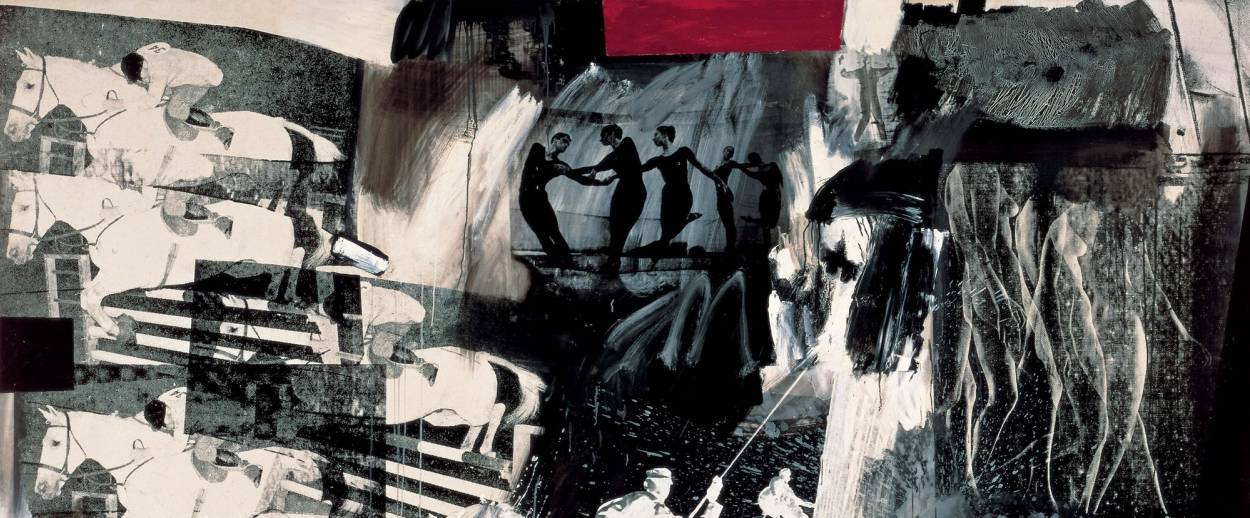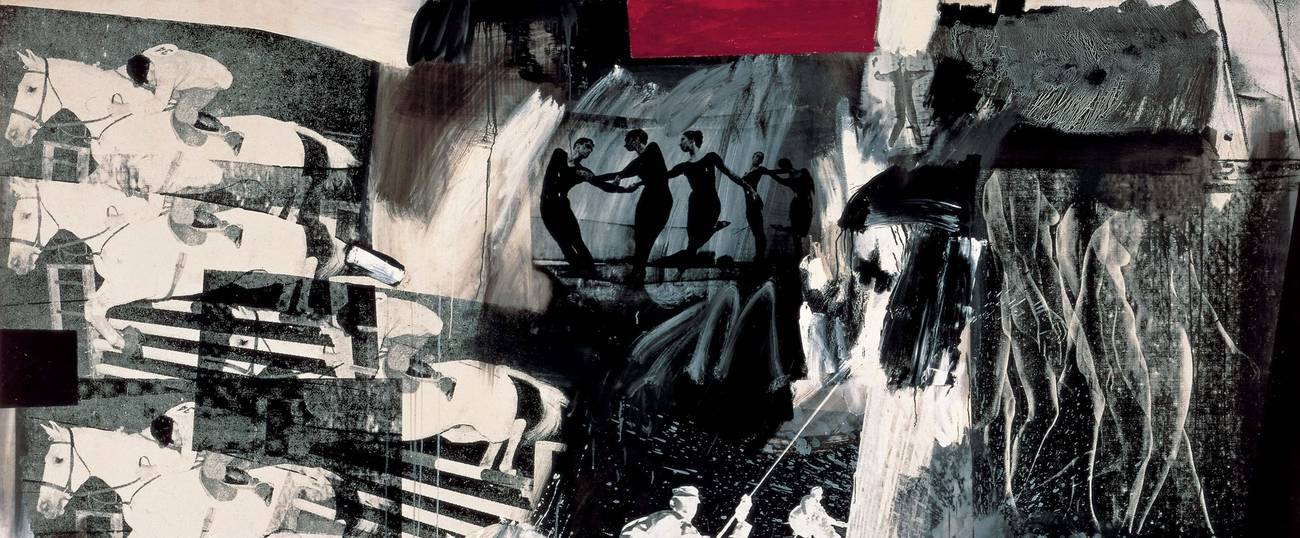The Ghetto Is Here
On the 75th anniversary of the establishment of the Warsaw ghetto, the author of the new Holocaust history ‘Black Earth’ reads the writing on the wall




In the center of Warsaw, on Grzybowski Square, the history of the Holocaust was written in the walls. A deserted building facing the Church of All Saints, at the address Empty Street No. 14, recalled the ghetto. Surrounded by Communist and post-Communist construction, it represented, in red brick and wrought iron, an altogether different time.
Before the war, Grzybowski Square was a hub for the Warsaw trams; from here its residents could go anywhere in the city. When I lived here last summer, I looked up each day to see the giant sepia photographs that covered the windows of the abandoned apartments on the upper floors of the building: men posing awkwardly, half smiles and best suits; women walking arm in arm. Jews.
On the ground floor of Empty Street No. 14, where the shops once were, graffiti engaged in a confused discussion. On the interior walls of an empty shop, seen through open and broken doors, were biblical quotations, written in different hands. To one side of the doors, someone spray-painted on the wall “ONR,” which stands for “Obóz Narodowo-Radikalny,” which was the right wing of Polish fascism before the war and is again today. The letters were drawn over by a number of hands so that they were barely visible. Even the most careful seeker of evidence of Polish anti-Semitism would have been unlikely to decode this. And yet it was there.
Just under it someone painted the word “Pamiętasz?” “Do you remember?”
On the other side of those doors were two sprayscreen images, next to each other, evenly placed, unmistakably in dialogue. On the right was an image of Jesus, with a single word, prawdą: “truth.” Thanks to the case system of Slavic grammar a single Polish word can cover the meaning of several in English; in this case, what is conveyed amounts to “is the truth.” This might be understood in various ways, but what was invoked was John 14:6, where Jesus says, “I am the way, and the truth, and the life.” The darker implication comes in the next sentence, where Jesus maintains that no one can attain the Father but through him. Immediately to the left of this image, the next page if we are reading in the Jewish way, was a map of the ghetto, Grzybowski Square visible at the southernmost tip.
The Hebrew caption read: “The ghetto was here.”
One day in August 1942 the people who lived on Empty Street were taken from their homes to the Umschlagplatz, forced onto trains, transported to Treblinka, and gassed to death. Grzybowski Square was then added to what everyone then called the Aryan side of Warsaw, where, in some sense, it remains. When the entire ghetto was burned by the Germans in 1943, the building at 14 Empty Street was outside its borders. When the entire city was burned after the Warsaw Uprising of 1944, most of the edifice somehow survived, as did a few others here and there.
One Sunday last summer, a family walked across the square after church: a girl, a boy, a father, a mother, a grandmother. The boy held his mother’s hand, half-skipping, happy that services are over. He looked up for a moment at the giant photographs. His eyes, behind glasses, took a moment to focus. He tilted his head ever so slightly, considering. Above him hung a giant image of boy, a bit younger and blonder than he, posing on a chair. “Mamo, co tam wisi?” “Mommy, what is hanging there?”
“Obrazy …” “Pictures …”
This summer, I found children playing in the water of the fountain in the middle of Grzybowski Square. At Empty Street 14 the walls are under restoration, behind a white screen bearing a company logo. The brick that recalls old Warsaw hides behind a white façade awaiting change from within; only a few balconies protrude to recall the rude beauty of old iron. The outer walls of the ground floor have been whitewashed, but one of the graffiti duels has returned. Someone has, once again, painted Jesus and the word “truth.” And someone else has, once again, painted a map of the ghetto next to it. And underneath another word has been added, presumably by the same hand: “boli,” “hurts.”
So, now, in summer 2015, the caption reads: “The truth hurts.”
With the renovation, the giant sepia photographs are gone. An even 75 years after the the establishment of the ghetto, we struggle to remember, seeking support in each round anniversary, imagining that one day or another in 2015 can reveal to us, by some alchemy of arithmetic and longing, the lesson of the past. We grieve the deaths of the last survivors of the Holocaust, the living resources of our culture of commemoration, the source of what we like to call memory. Yet alive or dead they cannot save us. Memory cannot save us. Pictures cannot save us. Understanding might.
***
You can help support Tablet’s unique brand of Jewish journalism. Click here to donate today.
Timothy Snyder is the Levin Professor of History at Yale University. His latest book is Our Malady: Lessons in Liberty from a Hospital Diary.